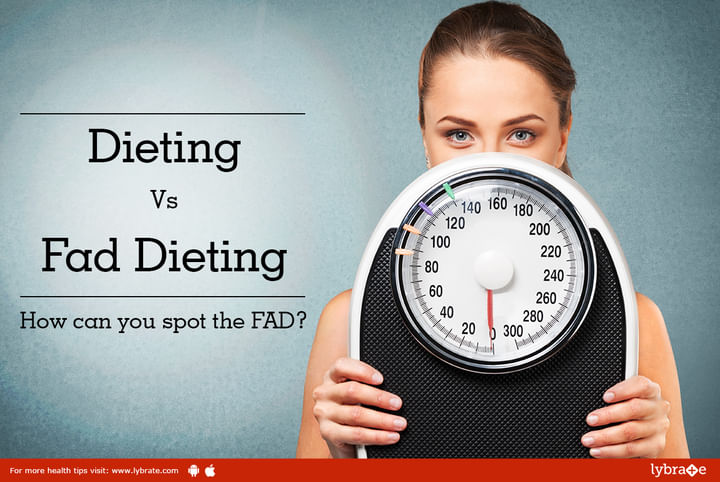Dieting Vs Fad Dieting: How can you spot the FAD?
Dieting vs Fad Dieting: How can you spot the Fad?
When it comes to health foods, the craze these days are the low-fat foods or the diet foods - This craze is more of a fad. A fad that unfortunately, most of us are following. However, it is important that we understand that if the goal is to lose weight or stay fit - 'fat-free' isn't a magic wand! The health food market is full of a variety of restricted fat versions of foods. There is a variety of 'fat-free', 'low-fat', 'light' and 'reduced-fat' products available.
Let's understand what these terms actually mean.
'Fat-free' foods have less than 0.5 grams of fat per serving.
'Low-fat' foods have 3 grams of fat or less per serving.
'Reduced-fat' foods have at least 25% less fat than regular versions of those foods.
'Light' foods have either 1/3 fewer calories or 50% less fat.
The real issue with the 'actual' fat-free foods is that they are tasteless. To make up for that, food industries pour ingredients which enhance the flavor - especially sugar, refined flour, thickeners, salt and other additives. That actually adds calories, chemicals, and stabilizers which make the food ironically much less healthy than its 'with fat' version!
If the foods are not very appealing, they are less satisfying. However, if it comes as a healthy version, you can eat it guilt free and maybe eat a lot more of it.
The right thought is to think good fat, not fat-free! Follow these rules for the right fat intake.
- When it comes to health, the type of fat you eat is more important than the amount of fat you eat. It is recommended to keep the amount of fat in your diet down to about 30% of the total calorie intake.
- Don't include saturated fats, which are found in animal products (beef, pork, butter, and other full-fat dairy products), or artificial trans fats, found in partially hydrogenated oils, Dalda or vanaspati.
- Choose lean cuts of meat and fish, and low-fat dairy products, and eliminate trans fats from your diet as much as possible.
- Chose pure ghee, nuts, dairy, fatty fish, fruits like avocado or jackfruit in your diet.
- Avoid packeted, convenience and processed foods.
Tips for buying fat-free foods
You do not have to completely miss total miss the fat-free foods, but pick them with the right knowledge! Here are the guidelines for the same:
- Read the food labels: Before buying a fat-free food, make sure the product isn't loaded with sugar or additives, and that it's actually lower in calories than the regular version. Also, check the serving size.
- Watch your servings: Sometimes it's better to eat one serving of more satisfying whole-fat food and avoid the extra calories and sugar in the low-fat version. So, having a few pieces of regular fried chips is way better than indulging in a bag full of the so-called baked chips.
- Eat more vegetables, fruits, legumes, and whole grains: These give you nutrients and fiber to keep you feeling full for longer, and they typically have fewer calories. They're also naturally low in fat. Eg: A baked potato is a better choice than 'baked' potato chips. The whole potato has more nutrients, more fiber, and fewer calories. Wheat cracks or daliya, vegetables, and fruit also have soluble fiber, which helps the body lower blood cholesterol. Your diet should have variety and be based on whole foods.
If you would like to consult with me privately, please click on 'Consult'.
Related Tip: If You Diet for Weight Loss, Here are 5 Myths You Might be Living With!




+1.svg)
